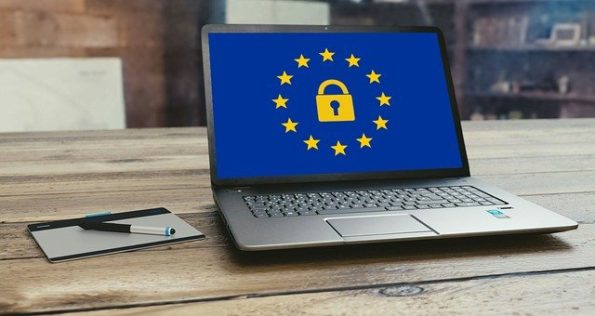Got a Yahoo account? You may want to change your password. Between 2013 and 2014, Yahoo experienced two data breaches that led to over 3 billion personal records exposed in 2013 and an additional 500 million records leaked in 2014.
Combined, these data breaches cost the company over $350 million. Besides the obvious remediation efforts and legal fees, the brand damage is beyond measurable. Yahoo’s example is one that demonstrates the ripple effects of a cyber attack and how it can go way beyond the data leak itself. It can have an irreversible impact on the company’s reputation and customer relations for many years to come.
As a result of these attacks, Yahoo was forced to lower its sale price by $350 million from an estimated $680 million. This turn of events sent waves across multiple sectors, creating a need for added security with updated data protection and privacy laws. In this post, learn about the nine principles of data protection and why they’re critical to maintaining data confidentiality and integrity.
What is data protection
 Every day, millions of people worldwide share their personal information and payment data on the internet as they shop and consume content and digital services. The enormous volume of data also means that there is a growing number of attack surfaces, triggering a growing need to protect it from data leaks, theft, and corruption.
Every day, millions of people worldwide share their personal information and payment data on the internet as they shop and consume content and digital services. The enormous volume of data also means that there is a growing number of attack surfaces, triggering a growing need to protect it from data leaks, theft, and corruption.
As the number of data breaches has increased, government entities and industry regulators worldwide have enacted strict data protection requirements for companies and organizations. In a general sense, data protection includes the following elements:
- Data safety: This category refers to basic data protection measures that have been enforced for decades. Today, all organizations must create data backups and enforce data retention processes.
- Data security: This category involves securing data flows with the best encryption protocols while ensuring strong authentication processes are in place. Organizations must also implement threat monitoring solutions for faster incident response times.
- Data privacy: This category addresses third-party access to data. Organizations must continuously monitor and document all data that goes outside of their ecosystem.
Privacy regulations have taken center stage with the creation of data governance and protection standards worldwide. One such standard is General Data Protection Regulation (GDPR)—a regulation of European Union (EU) law on data privacy and protection. The United Kingdom (UK) has its own privacy law, known as the Data Protection Act 2018. And the US has various laws and regulations around data protection, such as the California Consumer Privacy Act (CCPA) of 2018.
Why data protection is important
 Names, addresses, phone numbers, email addresses, and credit card information are some examples of the personal data organizations store, use, and share with third parties. Protecting this personal information has become critical to prevent hackers from stealing or otherwise compromising it during a data breach.
Names, addresses, phone numbers, email addresses, and credit card information are some examples of the personal data organizations store, use, and share with third parties. Protecting this personal information has become critical to prevent hackers from stealing or otherwise compromising it during a data breach.
Data protection is important for the following reasons:
- Sustainable compliance: By having strong data protection, you achieve sustainable compliance and avoid legal trouble and big fines. As an example, a Magecart attack on British Airways in 2018 led to a failure to protect over 400,000 personal records. This GDPR violation led to a hefty £20 million fine and private lawsuits filed by the victims.
- Good data lifecycle management: By having the right infrastructure and monitoring technology, you automate data flows and streamline communications within your ecosystems. You can also safely store data at rest, creating end-to-end data protection coverage for optimized security standards.
- Better disaster recovery (DR) capabilities: No organization or database is immune to cybercrime. By having strong data protection measures, your organization can respond faster to security mishaps. Security teams can then easily pinpoint the issues and restore backups while allowing legal teams to take the required actions to stay compliant.
9 principles of data protection
The nine principles of data protection correlate to GDPR standards, but they each play a role in data protection compliance around the globe.
1. Lawfulness
All data processing must have a legal basis, such as website performance-related data, and can start only after a user gives consent. You can collect data from children ages 16 and older. However, you can’t collect data for children under the age of 16 unless you have parental consent. At any time, a user can withdraw their consent.
GDPR strictly prohibits unauthorized usage or processing of Personal Identifiable Information (PII). Always document data collection and consent for future audits.
2. Fairness
Fairness refers to how you collect PII data. Always perform data collection fairly and never through misleading or deceptive actions. Also, make sure PII usage keeps in line with general expectations. To achieve fairness, conduct prior planning and coordination to make sure data usage will not impact any specific people or groups.
3. Transparency
While fairness covers PII collection, transparency addresses data sharing and processing procedures. Because organizations work with so many third-party applications and vendors, make users aware of where their PII will be processed. To ensure transparency, communicate these connections and dependencies in written form while minimizing “invisible processing” procedures.
4. Purpose limitation
Under the purpose limitation principle, your organization—referred to as a data controller in GDPR—must collect personal data for explicit, legitimate, and pre-defined purposes only. Document all processing purposes, but do not collect data for “invisible reasons.” Any data processing or sharing beyond this scope is considered a GDPR violation.
5. Data minimization
Only collect and process data that is needed for previously defined purposes. This principle supports the “data protection by design” principle. Also, make sure you constantly review your data collection requirements and work to keep them at a minimum. Over-collection of PII data directly violates GDPR.
6. Accuracy
Keep data as accurate as possible. In addition, users must have the ability to fix inaccurate data they may have previously provided, known as the right to rectification. However, you don’t need to keep track of personal data changes, such as a change of address.
7. Storage limitation
Know when data is no longer required and when you can delete it permanently. By deleting data that isn’t required, you reduce the attack surface and significantly lower the threat risk. Don’t store or distribute data without a lawful basis for retention. Often, a lawful basis doesn’t exist when a significant amount of time has passed after collecting the data.
8. Integrity and confidentiality
Minimize accidental data leaks by taking appropriate technical and organizational steps, including ongoing security training for existing and new employees. Eliminate or contain issues like identity fraud and social engineering hacks as soon as they occur. Start with cybersecurity awareness training and phishing awareness training, and back them with multiple cybersecurity protection layers.
9. Accountability
As the data controller, your organization is directly responsible for data protection. This principle is a big shift in the data protection philosophy, considering data processors (third parties) are no longer seen as GDPR violators. Document all data collection and processing activities to demonstrate compliance.
To help manage all data protection practices, appoint a data protection officer (DPO). Also, keep staff accountable in their data handling practices.
Secure your data with cybersecurity awareness training
 A lot is at stake when it comes to data protection. Regardless of whether you follow GDPR or other data protection standards, keep these nine principles in mind as part of your data protection strategy.
A lot is at stake when it comes to data protection. Regardless of whether you follow GDPR or other data protection standards, keep these nine principles in mind as part of your data protection strategy.
Confronting cyber threats starts with the weakest link—your employees. Secure your data with cybersecurity awareness training to create a security culture. To boost that training, provide phishing simulations and zero-trust posture training.
With so many employees working remotely today, choose an interactive and engaging solution that gives participants real-time insights for optimum effectiveness.













